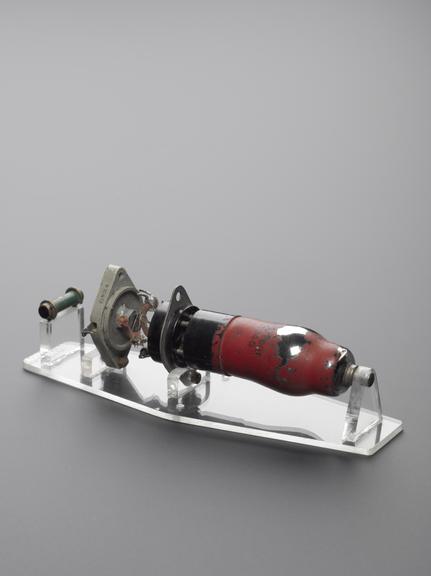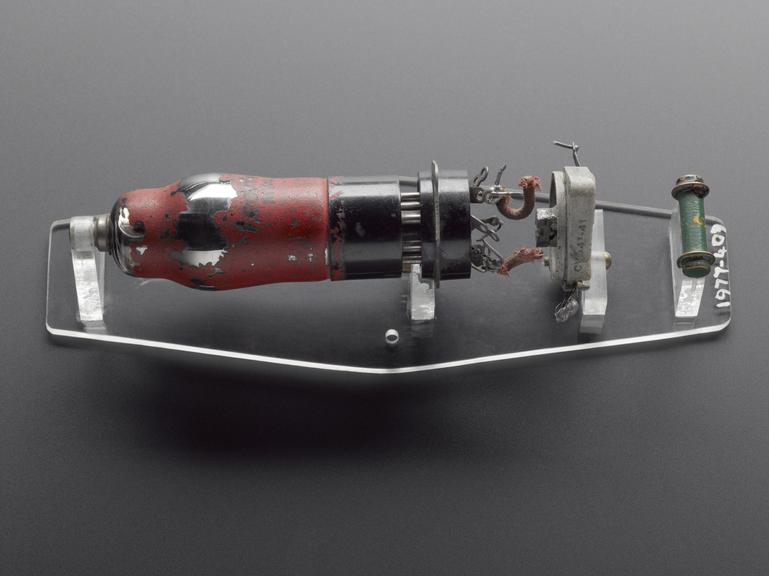Valve from Colossus project, 1940-1945
1940-1945




Components from Colossus project (valve in holder; resistor; capacitor), designed by Tommy Flowers, made at the Post Office Research Station and used at the Government Code and Ciphers School at Bletchley Park, 1940-1945
Components from Colossus project (valve in holder; resistor; capacitor), designed by Tommy Flowers and made by the Government Code and Ciphers School at Bletchley Park, 1940-1945.
Bletchley Park was the home of code breaking during the Second World War. At its peak, 'Station X' employed 7000 people. It was also the birthplace and home of Colossus, the world's first programmable computer. Colossus was designed by Tommy Flowers (1905-1998), informed by the work of Alan Turing (1912-1954), and was instrumental in decoding "Fish" messages. At the end of the war, the machines, along with blueprints, were destroyed to protect government secrets. Very few pieces of the machines remain in existence. These components were taken by one of the team who had worked on the Colossi, and were used in a radio receiver until they were passed to Professor Brian Randell at Newcastle University and a key figure in the campaign to get information about Colossus declassified early.



